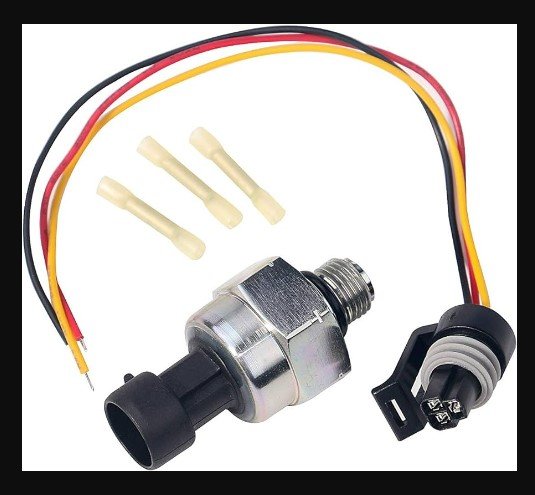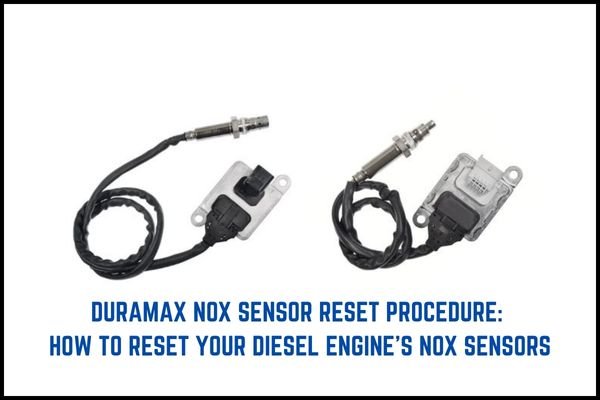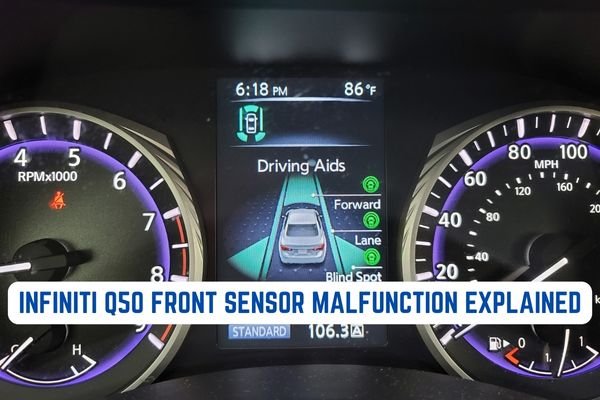What Are 7.3 ICP Sensor Symptoms?
The ICP (Injection Control Pressure) sensor is a critical component in a 7.3-liter Powerstroke diesel engine, responsible for monitoring and regulating the high-pressure oil system. When this sensor begins to malfunction or fail, it can manifest a range of symptoms that affect engine performance.
In this article, we will explore the common symptoms associated with a faulty 7.3 ICP sensor. Recognizing these signs is essential for timely diagnosis and repair, ensuring the engine operates efficiently and reliably.
Table of Contents
What are 7.3 ICP sensor symptoms?

01. Hard Starting
Hard starting in a 7.3 Powerstroke engine can be a common symptom of a failing ICP sensor. The ICP sensor plays a crucial role in regulating the injection pressure in the high-pressure oil system.
If the sensor malfunctions, it may provide incorrect pressure readings to the engine control module (ECM). This can result in inadequate high-pressure oil during startup, making it difficult for the engine to fire up smoothly.
When the ICP sensor fails, it may not accurately detect the pressure required for proper fuel atomization and combustion. As a result, the engine may experience extended cranking times before it eventually starts.
This symptom is often exacerbated in colder weather conditions when the oil is thicker and requires higher pressure for effective injection.
02. Rough Idle
A failing ICP sensor can also contribute to a rough idle. The engine requires precise control over fuel injection timing and pressure during idle. If the ICP sensor provides incorrect pressure data to the ECM, it can disrupt the engine’s ability to maintain a stable idle.
Inaccurate pressure readings from the ICP sensor can lead to improper fuel atomization, causing uneven combustion in the cylinders. This uneven combustion results in a rough idle, where the engine may feel misfiring or running unevenly.
The ECM relies on the ICP sensor to adjust injector timing and pulse width to achieve optimal idle conditions, and a faulty sensor can hinder this process.
03. Loss of Power
A failing ICP sensor can also contribute to a noticeable loss of power in a 7.3 Powerstroke engine. This occurs because the ICP sensor determines the high-pressure oil required for effective fuel injection.
When the sensor fails, it may signal to the ECM that there is inadequate oil pressure, leading to adjustments in injector timing and pulse width that result in reduced power output.
As the ICP sensor’s readings become unreliable, the ECM may enter a default mode that limits fuel injection to prevent engine damage. This conservative approach to fueling, based on inaccurate pressure data from the failing sensor, can result in decreased engine performance and reduced power when accelerating or under load.
04. Black Smoke
Black smoke from the exhaust is often associated with excessive fuel delivery. In the context of a failing ICP sensor, this symptom can occur because the sensor is not providing accurate pressure information to the ECM. This can lead to an overcompensation in fuel injection, causing an overly rich air/fuel mixture.
As a result, incomplete combustion occurs, leading to the production of black smoke. The excess fuel in the mixture cannot be entirely burned, and it is expelled as visible black exhaust emissions. This phenomenon is not only inefficient but can also be harmful to the engine and the environment.
05. White Smoke
White smoke from the exhaust can have several potential causes, one of which is related to a failing ICP sensor. When the sensor provides incorrect pressure readings to the ECM, it can disrupt the fuel injection process. This disruption can lead to incomplete combustion and the production of white smoke.
Incomplete combustion, which results from an incorrect air/fuel mixture caused by ICP sensor issues, can produce unburned fuel and water vapor in the exhaust. When expelled from the tailpipe, this mixture of unburned fuel and water vapor appears as white smoke.
In conclusion, a failing ICP sensor can significantly impact the performance and behavior of a 7.3 Powerstroke engine. It can lead to hard starting due to inaccurate pressure readings during startup, resulting in a rough idle by disrupting fuel injection timing and pressure, causing a loss of power due to conservative fueling strategies, and generating black or white smoke as a consequence of incorrect air/fuel mixtures and incomplete combustion.
7.3 Exhaust Back Pressure Sensor Symptoms; Must Read
sensor diary
What causes the ICP sensor to go bad?

ICP (Injection Control Pressure) sensors can go bad due to various factors, and while they are generally reliable components, they can still fail over time. Here are some common reasons why ICP sensors can go bad:
01. Wear and Tear
Like most automotive components, ICP sensors can wear out with age and usage. The constant exposure to high-pressure oil and temperature fluctuations can lead to the degradation of the sensor’s internal components over time.
02. Oil Contamination
Contaminated engine oil can damage the ICP sensor. Particles or debris in the oil can enter the sensor and interfere with its operation, leading to sensor failure. Regular oil changes and using high-quality, clean oil are essential to prevent this.
03. Excessive Heat
The location of the ICP sensor near the engine and exhaust components exposes it to high temperatures. Over time, these high temperatures can cause the sensor’s components to deteriorate and affect its accuracy.
04. Oil Leaks
If there are oil leaks in the high-pressure oil system, such as in the O-rings, fittings, or hoses, the ICP sensor may be exposed to external oil that can damage its internal components or cause electrical issues.
05. Vibration and Mechanical Stress
The constant vibrations and mechanical stress experienced by the sensor, especially in a diesel engine, can lead to internal damage or loose connections over time.
It’s worth noting that while these factors can contribute to ICP sensor failure, not all ICP sensor issues are due to these causes. Diagnosing a faulty ICP sensor should involve thoroughly inspecting the sensor’s electrical connections, wiring, and high-pressure oil system to determine the root cause of the problem.
If you suspect your ICP sensor is bad, it must be properly diagnosed and replaced by a qualified mechanic to ensure the correct repair is made.
What is the 7.3 ICP sensor replacement procedure?
To replace the ICP sensor on a 7.3 Powerstroke, follow these steps:
- Locate the ICP sensor. It is located near the front of the driver’s side of the engine.
- Disconnect the electrical connector from the ICP sensor.
- Use a wrench to loosen the ICP sensor.
- Remove the ICP sensor from the engine.
- Apply a thin coat of sealant to the threads of the new ICP sensor.
- Install the new ICP sensor in the engine.
- Tighten the ICP sensor with a wrench.
- Connect the electrical connector to the ICP sensor.
- Start the engine and check for leaks.
Here are some additional tips for replacing the ICP sensor:
- Make sure the engine is cool before you start working on it.
- Be careful not to overtighten the ICP sensor, as this can damage it.
- Use a torque wrench to tighten the ICP sensor to the specified torque.
- Apply sealant to the threads of the new ICP sensor to prevent leaks.
- Start the engine and check for leaks after you replace the ICP sensor.
If you are uncomfortable replacing the ICP sensor, take your truck to a qualified mechanic. They will be able to replace the sensor quickly and correctly.
Can A Bad Downstream Oxygen Sensor Cause A Rough Idle?
sensor Diary
How to test the 7.3 ICP sensor?
Testing the ICP (Injection Control Pressure) sensor on a 7.3 Powerstroke engine is an important diagnostic step if you suspect the sensor is malfunctioning. Here’s a step-by-step guide on how to test the ICP sensor:
Tools and Materials Needed
- Multimeter
- Safety glasses
- Nitrile gloves
- Clean rags
- A friend or assistant to help with the test
Step-by-step Procedure
Step 01. Safety Precautions: Before you begin, ensure that the engine is off and the key is in the off position. Wear safety glasses and nitrile gloves to protect your eyes and hands during testing.
Step 02. Locate the ICP Sensor: The ICP sensor is typically located on the driver’s side of the engine, near the HPOP (High-Pressure Oil Pump) reservoir. It has a three-wire electrical connector attached to it.
Step 03. Disconnect the ICP Sensor: Carefully disconnect the electrical connector from the ICP sensor. Be gentle to avoid damaging the connector or the wires.
Step 04. Inspect the Wiring: Examine the wiring for any visible damage, corrosion, or loose connections. Repair or replace any damaged wires or connectors before proceeding.
Step 04. Set Up the Multimeter: Set your multimeter to measure DC voltage in the appropriate range (usually around 0-5 volts).
Step 05. Connect the Multimeter: Connect the multimeter’s black (negative) lead to a good ground on the engine or the vehicle’s chassis. Use a clean, bare metal surface for a reliable ground connection.
Step 06. Test the ICP Sensor Signal Voltage:
- With the ICP sensor disconnected, turn the key to the “ON” position without starting the engine. This will provide power to the sensor circuit.
- Measure the voltage between the ICP sensor’s signal wire (usually the middle wire in the sensor’s connector) and the ground. This wire carries the signal voltage from the ICP sensor to the ECM.
- Have a friend or assistant crank the engine while you monitor the multimeter. The voltage reading should increase as the engine cranks. It typically starts around 0.2-0.5 volts and should rise to approximately 1.0-1.3 volts during cranking.
- If the voltage reading does not change or remains at zero, it indicates a faulty ICP sensor. A properly functioning sensor should produce a varying signal voltage as the engine cranks.
Step 07. Interpret the Results: Based on your voltage readings, you can draw the following conclusions:
Step 08. Steady Zero Voltage: This suggests a likely ICP sensor failure and should be replaced.
Step 09. Steady Voltage but Not Within Expected Range: If the voltage reading remains steady but is not within the expected range (approximately 1.0-1.3 volts during cranking), it may also indicate a faulty ICP sensor.
Step 10. Voltage Varies Within Expected Range: If the voltage varies within the expected range during cranking, the ICP sensor is likely functioning correctly, and the issue may lie elsewhere in the system.
Step 11. Reconnect the ICP Sensor: If you’ve determined the ICP sensor is faulty, replace it with a new one. Ensure the new sensor is properly connected to the electrical connector.
Step 12. Clear Error Codes: If any error codes are related to the ICP sensor stored in the ECM, use a diagnostic scanner to clear them after replacing the sensor.
Step 13. Test Drive: After replacing the ICP sensor, take your vehicle for a test drive to ensure that the symptoms (such as hard starting, rough idle, or loss of power) have been resolved.
Remember that diagnosing and repairing engine issues can be complex. If you are unsure about the test results or lack the necessary tools and experience, you should seek assistance from a qualified mechanic or technician specializing in diesel engines. They can provide a more thorough diagnosis and ensure the correct repair is made.




